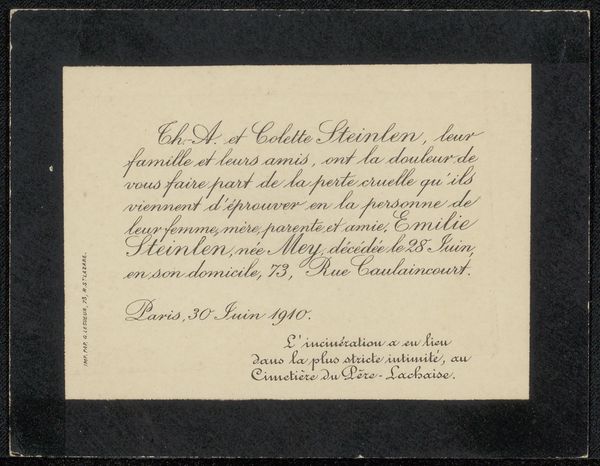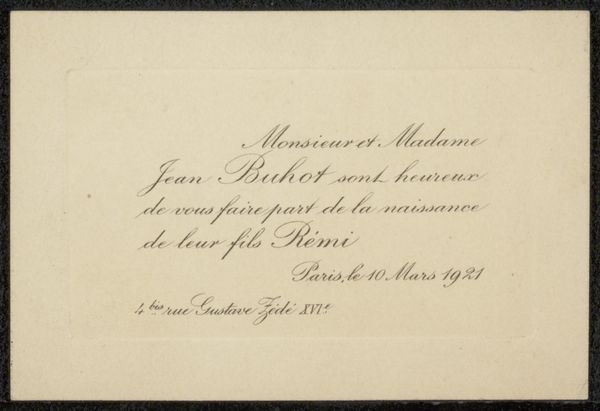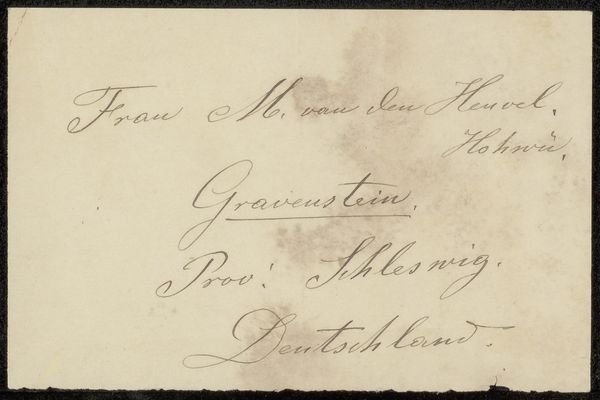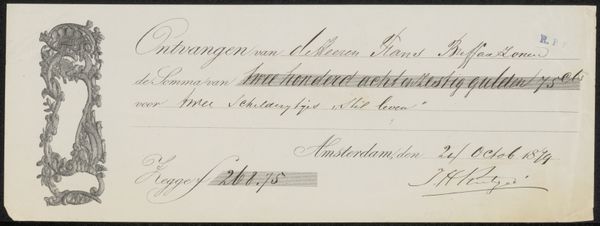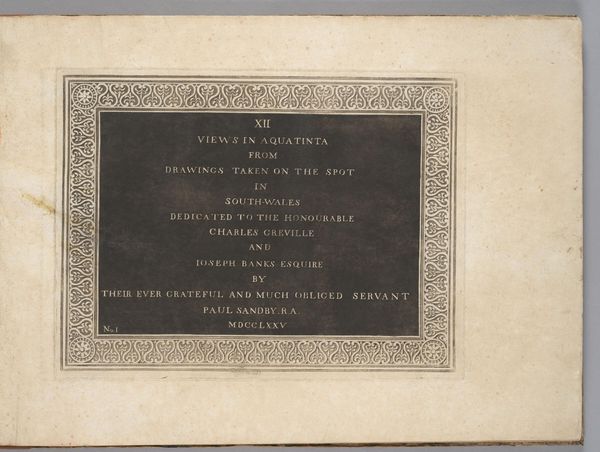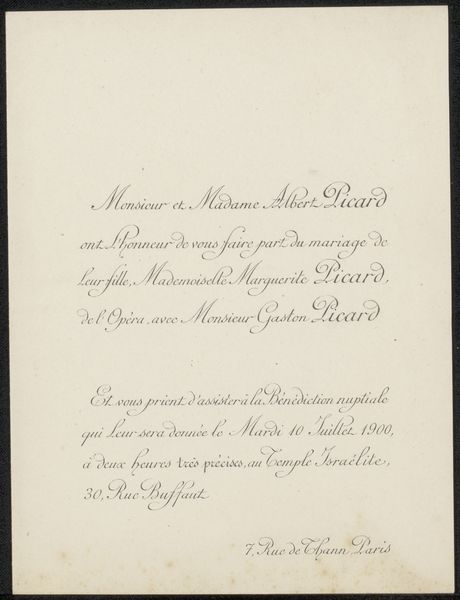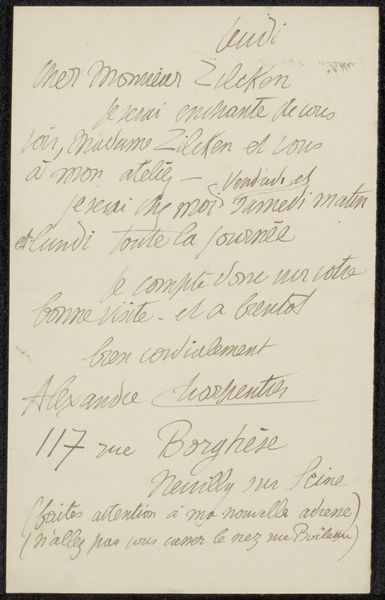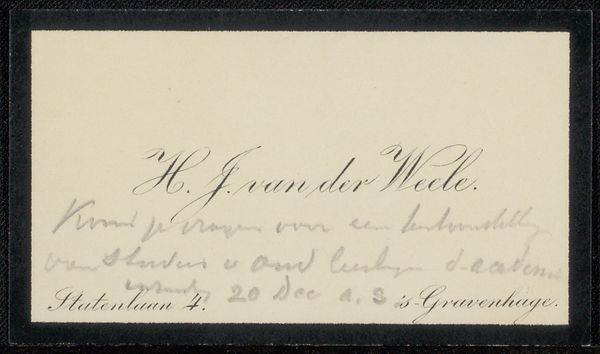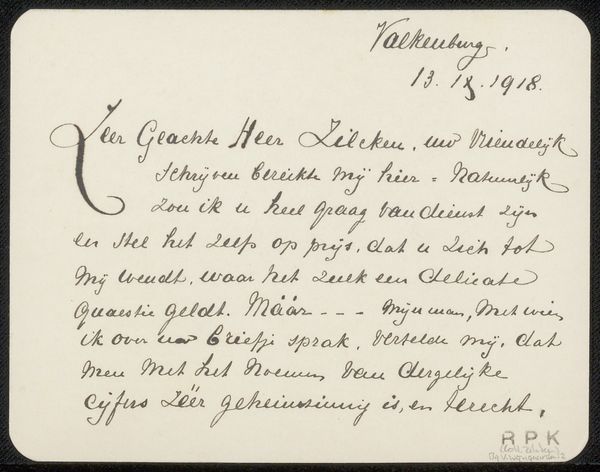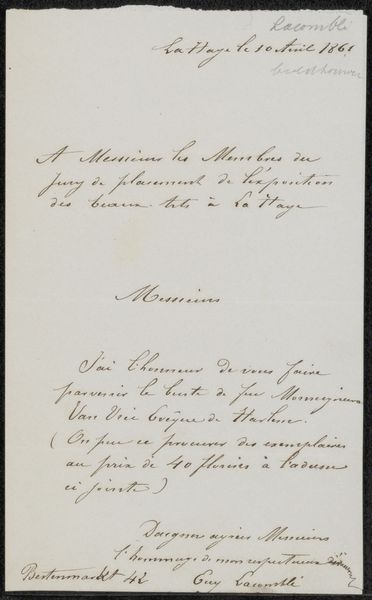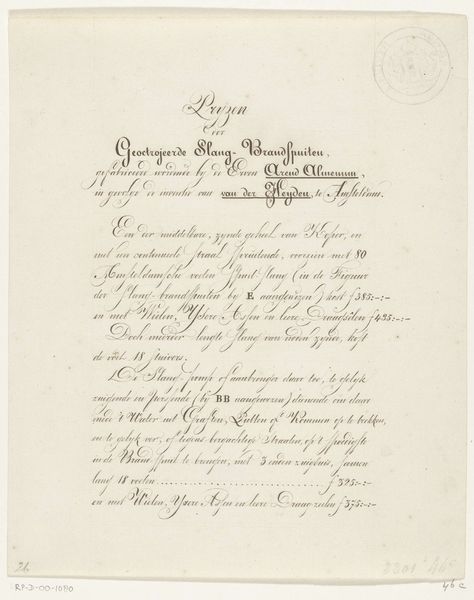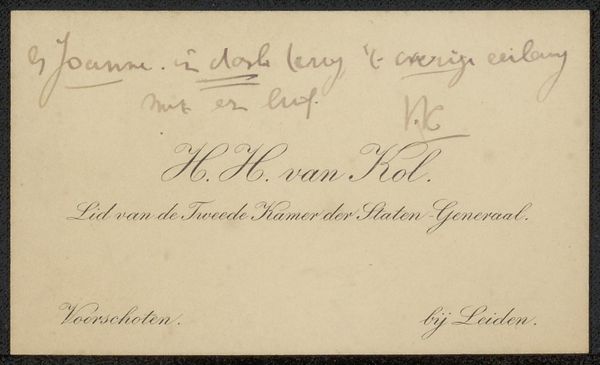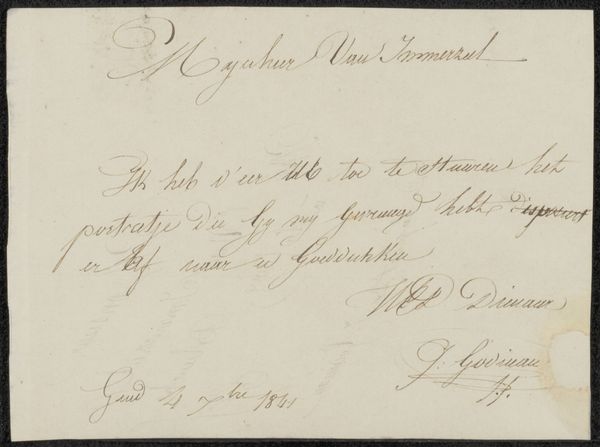
print, paper, typography, ink
#
ink paper printed
# print
#
paper
#
typography
#
ink
#
calligraphy
Copyright: Rijks Museum: Open Domain
Curator: Looking at this announcement, I can't help but feel a certain melancholy. The beautiful, sweeping calligraphy speaks of tradition, while the "Geen Receptie," or "No Reception," hints at a different, perhaps simpler story. Editor: Well, melancholy is interesting... to me it just has such crisp and dignified feel, you know? We're looking at "Huwelijksaankondiging aan Philip Zilcken," a print dating possibly to 1914, held here at the Rijksmuseum. It's ink on paper, typography really—a formal announcement. Does that “no reception” say something specific, historically, perhaps austerity, in a way, Curator? Curator: Precisely! Social historians like to view such objects in a network of historical conditions and events, like say the gathering war clouds in Europe. To me, this evokes the social norms of early 20th-century Netherlands, perhaps hinting at wartime frugality or a more private affair, since even a printed invite meant something within societal conventions. Editor: The formal tone also points to that, the elaborate phrasing… "the honor of informing you of their intended marriage," it’s wonderfully, rigidly polite. Did this kind of formality signal societal expectations, constrain self-expression maybe, more for women? Curator: Absolutely. The announcement’s very existence reflects institutional and social roles—marriage as a legal and public act. Albertine de Haas is almost secondary; the focus starts with "Mr. J. Draaijer" and his municipal role. Even the typography subtly reinforces gendered norms by positioning the male partner’s identity ahead of hers. I do feel moved by such tiny glimpses of such private history, laid bare in the formal domain of printed materials. The social is written everywhere, it is felt, in what’s declared, and, poignantly, in what's been deliberately left unsaid... I just feel this heavy sense of what cannot be freely articulated here. Editor: It is incredible isn’t it—these almost discarded ephemera offering glimpses into deeply personal yet rigidly formalized moments in peoples lives, made so palpable by material object like ink on paper… "no reception"—imagine the stories untold in that slight absence. It gives such an understated feel. Curator: It really does linger with me too, how one single card becomes, across the decades, like looking straight into the looking glass... or a slightly dimmed mirror.
Comments
No comments
Be the first to comment and join the conversation on the ultimate creative platform.
